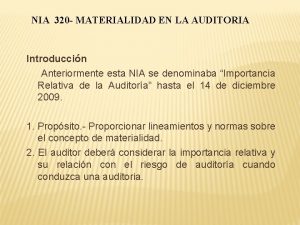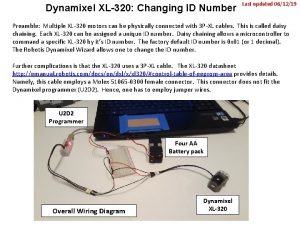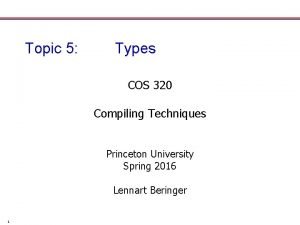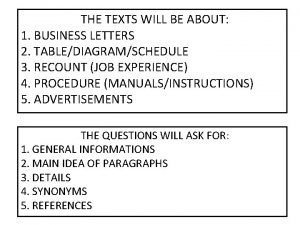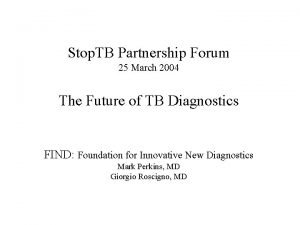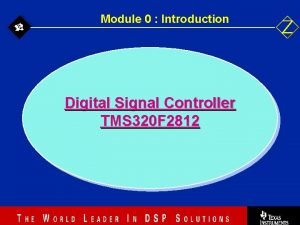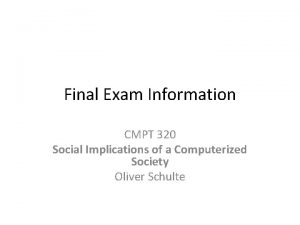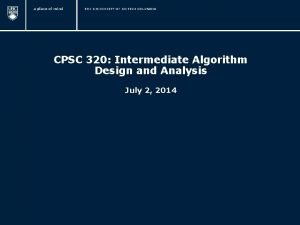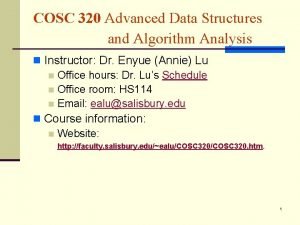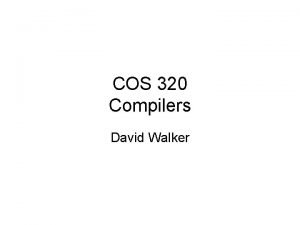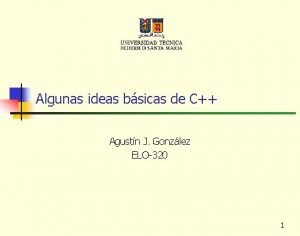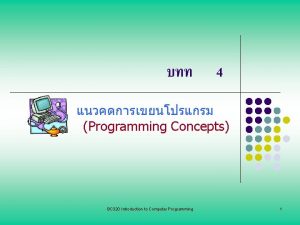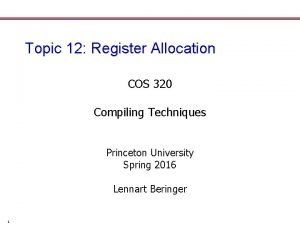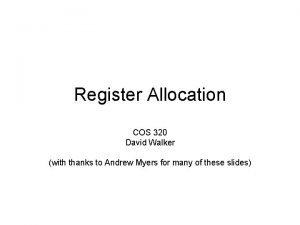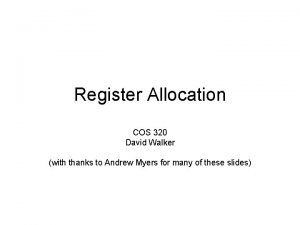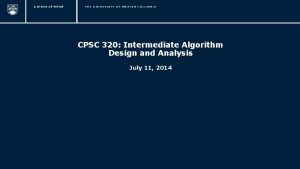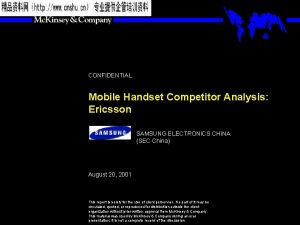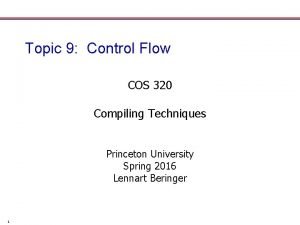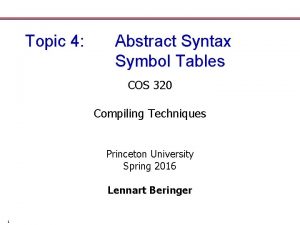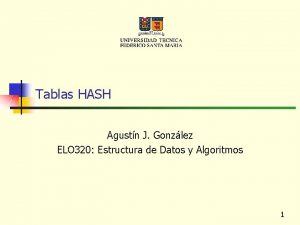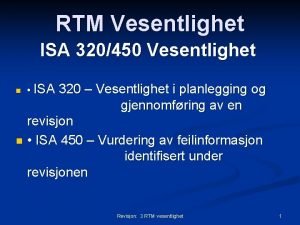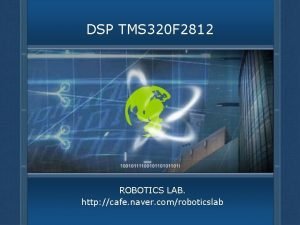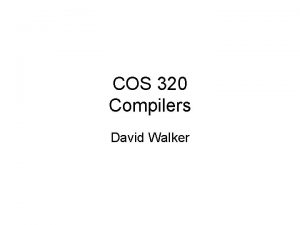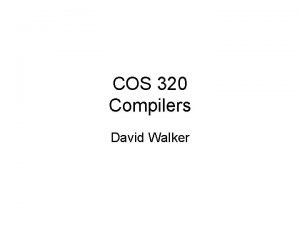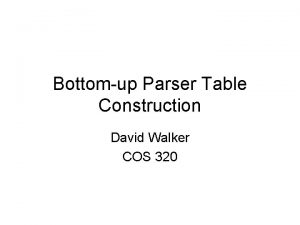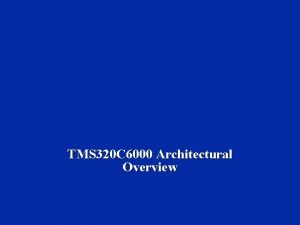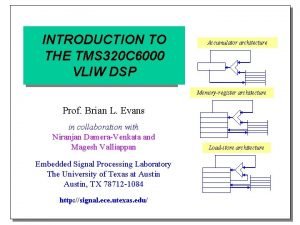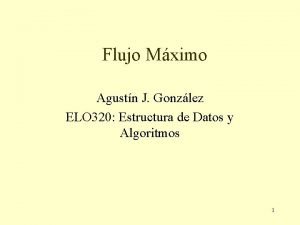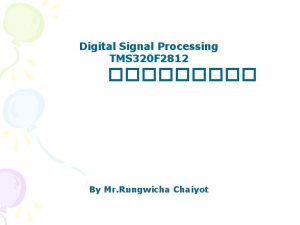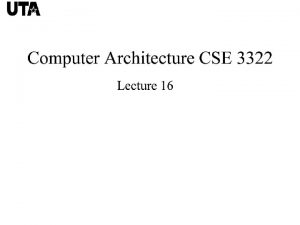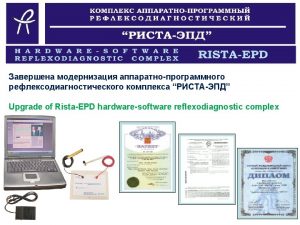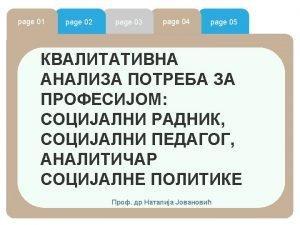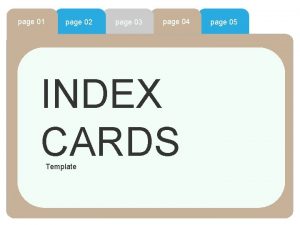Review Fig 4 15 page 320 Fig 4









![STATE S 0 S 1 S 2 S 3 S 4 Register Transfers M[PC] STATE S 0 S 1 S 2 S 3 S 4 Register Transfers M[PC]](https://slidetodoc.com/presentation_image_h2/a38f659c7342d4211a1744b53c4b840c/image-10.jpg)




![lw rt, imm 16 (rs) # load word M[ R[rs] + sign_ext(imm 16) ] lw rt, imm 16 (rs) # load word M[ R[rs] + sign_ext(imm 16) ]](https://slidetodoc.com/presentation_image_h2/a38f659c7342d4211a1744b53c4b840c/image-15.jpg)

![lw rt, imm 16 (rs) # load word M[ R[rs] + sign_ext(imm 16) ] lw rt, imm 16 (rs) # load word M[ R[rs] + sign_ext(imm 16) ]](https://slidetodoc.com/presentation_image_h2/a38f659c7342d4211a1744b53c4b840c/image-17.jpg)

![lw rt, imm 16 (rs) # load word M[ R[rs] + sign_ext(imm 16) ] lw rt, imm 16 (rs) # load word M[ R[rs] + sign_ext(imm 16) ]](https://slidetodoc.com/presentation_image_h2/a38f659c7342d4211a1744b53c4b840c/image-19.jpg)
![lw rt, imm 16 (rs) # load word M[ R[rs] + sign_ext(imm 16) ] lw rt, imm 16 (rs) # load word M[ R[rs] + sign_ext(imm 16) ]](https://slidetodoc.com/presentation_image_h2/a38f659c7342d4211a1744b53c4b840c/image-20.jpg)
![lw rt, imm 16 (rs) # load word M[ R[rs] + sign_ext(imm 16) ] lw rt, imm 16 (rs) # load word M[ R[rs] + sign_ext(imm 16) ]](https://slidetodoc.com/presentation_image_h2/a38f659c7342d4211a1744b53c4b840c/image-21.jpg)
![lw rt, imm 16 (rs) # load word M[ R[rs] + sign_ext(imm 16) ] lw rt, imm 16 (rs) # load word M[ R[rs] + sign_ext(imm 16) ]](https://slidetodoc.com/presentation_image_h2/a38f659c7342d4211a1744b53c4b840c/image-22.jpg)
![lw rt, imm 16 (rs) # load word M[ R[rs] + sign_ext(imm 16) ] lw rt, imm 16 (rs) # load word M[ R[rs] + sign_ext(imm 16) ]](https://slidetodoc.com/presentation_image_h2/a38f659c7342d4211a1744b53c4b840c/image-23.jpg)
![sw rt, imm 16 ( rs) # store word R[rt] M[ R[rs] + sign_ext(imm sw rt, imm 16 ( rs) # store word R[rt] M[ R[rs] + sign_ext(imm](https://slidetodoc.com/presentation_image_h2/a38f659c7342d4211a1744b53c4b840c/image-24.jpg)
![sw rt, imm 16 ( rs) # store word R[rt] M[ R[rs] + sign_ext(imm sw rt, imm 16 ( rs) # store word R[rt] M[ R[rs] + sign_ext(imm](https://slidetodoc.com/presentation_image_h2/a38f659c7342d4211a1744b53c4b840c/image-25.jpg)

![R – Arithmetic – Logic Instruction op rd, rs, rt R[rs] op R[rt] R R – Arithmetic – Logic Instruction op rd, rs, rt R[rs] op R[rt] R](https://slidetodoc.com/presentation_image_h2/a38f659c7342d4211a1744b53c4b840c/image-27.jpg)
![R – Arithmetic – Logic Instruction op rd, rs, rt R[rs] op R[rt] R R – Arithmetic – Logic Instruction op rd, rs, rt R[rs] op R[rt] R](https://slidetodoc.com/presentation_image_h2/a38f659c7342d4211a1744b53c4b840c/image-28.jpg)
![R – Arithmetic – Logic Instruction op rd, rs, rt R[rs] op R[rt] R R – Arithmetic – Logic Instruction op rd, rs, rt R[rs] op R[rt] R](https://slidetodoc.com/presentation_image_h2/a38f659c7342d4211a1744b53c4b840c/image-29.jpg)
![R – Arithmetic – Logic Instruction op rd, rs, rt R[rs] op R[rt] R R – Arithmetic – Logic Instruction op rd, rs, rt R[rs] op R[rt] R](https://slidetodoc.com/presentation_image_h2/a38f659c7342d4211a1744b53c4b840c/image-30.jpg)
![R – Arithmetic – Logic Instruction op rd, rs, rt R[rs] op R[rt] R R – Arithmetic – Logic Instruction op rd, rs, rt R[rs] op R[rt] R](https://slidetodoc.com/presentation_image_h2/a38f659c7342d4211a1744b53c4b840c/image-31.jpg)











![State Register Transfers S 0 M[PC] IR, PC + 4 PC, S 1 S State Register Transfers S 0 M[PC] IR, PC + 4 PC, S 1 S](https://slidetodoc.com/presentation_image_h2/a38f659c7342d4211a1744b53c4b840c/image-43.jpg)
![State Register Transfers S 0 M[PC] IR, PC + 4 PC, S 1 R[IR[25 State Register Transfers S 0 M[PC] IR, PC + 4 PC, S 1 R[IR[25](https://slidetodoc.com/presentation_image_h2/a38f659c7342d4211a1744b53c4b840c/image-44.jpg)

![State Register Transfers S 0 M[PC] IR, PC + 4 PC, S 1 R[IR[25 State Register Transfers S 0 M[PC] IR, PC + 4 PC, S 1 R[IR[25](https://slidetodoc.com/presentation_image_h2/a38f659c7342d4211a1744b53c4b840c/image-46.jpg)
![State Register Transfers S 0 M[PC] IR, PC + 4 PC, S 1 R[IR[25 State Register Transfers S 0 M[PC] IR, PC + 4 PC, S 1 R[IR[25](https://slidetodoc.com/presentation_image_h2/a38f659c7342d4211a1744b53c4b840c/image-47.jpg)
![State Register Transfers S 0 M[PC] IR, PC + 4 PC, S 1 R[IR[25 State Register Transfers S 0 M[PC] IR, PC + 4 PC, S 1 R[IR[25](https://slidetodoc.com/presentation_image_h2/a38f659c7342d4211a1744b53c4b840c/image-48.jpg)
![State Register Transfers S 0 M[PC] IR, PC + 4 PC, S 1 R[IR[25 State Register Transfers S 0 M[PC] IR, PC + 4 PC, S 1 R[IR[25](https://slidetodoc.com/presentation_image_h2/a38f659c7342d4211a1744b53c4b840c/image-49.jpg)
![R – Arithmetic – Logic Instruction op rd, rs, rt R[rs] op R[rt] R R – Arithmetic – Logic Instruction op rd, rs, rt R[rs] op R[rt] R](https://slidetodoc.com/presentation_image_h2/a38f659c7342d4211a1744b53c4b840c/image-50.jpg)
![State Register Transfers S 0 M[PC] IR, PC + 4 PC, S 1 R[IR[25 State Register Transfers S 0 M[PC] IR, PC + 4 PC, S 1 R[IR[25](https://slidetodoc.com/presentation_image_h2/a38f659c7342d4211a1744b53c4b840c/image-51.jpg)
![State Register Transfers S 0 M[PC] IR, PC + 4 PC, S 1 R[IR[25 State Register Transfers S 0 M[PC] IR, PC + 4 PC, S 1 R[IR[25](https://slidetodoc.com/presentation_image_h2/a38f659c7342d4211a1744b53c4b840c/image-52.jpg)

![State Register Transfers S 0 M[PC] IR, PC + 4 PC, S 1 R[IR[25 State Register Transfers S 0 M[PC] IR, PC + 4 PC, S 1 R[IR[25](https://slidetodoc.com/presentation_image_h2/a38f659c7342d4211a1744b53c4b840c/image-54.jpg)

![State Register Transfers S 0 M[PC] IR, PC + 4 PC, S 1 R[IR[25 State Register Transfers S 0 M[PC] IR, PC + 4 PC, S 1 R[IR[25](https://slidetodoc.com/presentation_image_h2/a38f659c7342d4211a1744b53c4b840c/image-56.jpg)
![What would “Halt” look like? S 0 S 10 M[PC] IR, PC + 4 What would “Halt” look like? S 0 S 10 M[PC] IR, PC + 4](https://slidetodoc.com/presentation_image_h2/a38f659c7342d4211a1744b53c4b840c/image-57.jpg)
![What would “Halt” look like? S 0 S 1 M[PC] IR, PC + 4 What would “Halt” look like? S 0 S 1 M[PC] IR, PC + 4](https://slidetodoc.com/presentation_image_h2/a38f659c7342d4211a1744b53c4b840c/image-58.jpg)

![What if a Memory Read took 3 clock cycles? Instead of S 0 M[PC] What if a Memory Read took 3 clock cycles? Instead of S 0 M[PC]](https://slidetodoc.com/presentation_image_h2/a38f659c7342d4211a1744b53c4b840c/image-60.jpg)
- Slides: 60


Review Fig 4. 15 page 320 / Fig. 4. 17 page 322 Review Timing

Multicycle Implementation • Realistic Approach • Enables time sharing functional units during an instruction ( Memory and ALU) • Enables instructions to be implemented with different number of clock cycles

Multicycle Implementation Assumptions: • Each STEP in the execution will take 1 clock cycle

Multicycle Implementation Assumptions: • • Each STEP in the execution will take 1 clock cycle Each of these operations require 1 clock cycle - Memory Access ( Idealized) - Register File Access - An ALU Operation

Multicycle Implementation Assumptions: • • Each STEP in the execution will take 1 clock cycle Each of these operations require 1 clock cycle - Memory Access ( Idealized) - Register File Access - An ALU Operation • Any Data produced by these must be held in a register to be used in a later cycle

Instruction register PC Address Memory Data IR Instruction or data Memory data register Data A Register # ALU Registers Register # B Register # MDR IR timing requires a write control signal ALUOut

Processor Design Processor (Instruction Set Architecture) Datapath Control Mem Reg File ALU Mux Reg Gates Decoder Sequencer

Processor Design Processor (Instruction Set Architecture) Datapath Control Register Transfer Sequence Mem Reg File ALU Mux Reg Gates Decoder Sequencer
![STATE S 0 S 1 S 2 S 3 S 4 Register Transfers MPC STATE S 0 S 1 S 2 S 3 S 4 Register Transfers M[PC]](https://slidetodoc.com/presentation_image_h2/a38f659c7342d4211a1744b53c4b840c/image-10.jpg)
STATE S 0 S 1 S 2 S 3 S 4 Register Transfers M[PC] IR, PC+4 PC, R[IR[25 -21]] A, A + sign_ext(IR[15 -0]) ALUOut, M[ ALUOut] MDR, MDR R[ IR[20 -16]], NEXT STATE S 1 S 2 S 3 S 4 S 0 S S S

MIPS - Lite Consider the following instructions for implementation INSTRUCTION OP R type add 0 subtract 0 AND 0 OR 0 set on less than 0 load word 35 store word 43 branch equal 4 FUNCT 32 34 36 37 42 na na na

Basic steps all instructions execute 1. Access the Instruction from Memory 2. Decode Instruction and Access the Data from Registers 3. Perform the Instruction 4. Write the Result

For Multicycle Design Define S = S 0 , S 1 , S 2 , . . . , Sn Where S is the STATE of the processor. Sk denotes that S decodes to k

Load Word & Store Word ( I – type ) lw rt, imm 16 (rs) or sw rt, imm 16 ( rs) op rs rt address/ immediate 31, . . . 26, 25, . . . 21, 20, . . . 16, 15, . . . lw # load word M[ R[rs] + sign_ext(imm 16) ] sw R[rt] 0 R[rt] # store word M[ R[rs] + sign_ext(imm 16) ]
![lw rt imm 16 rs load word M Rrs signextimm 16 lw rt, imm 16 (rs) # load word M[ R[rs] + sign_ext(imm 16) ]](https://slidetodoc.com/presentation_image_h2/a38f659c7342d4211a1744b53c4b840c/image-15.jpg)
lw rt, imm 16 (rs) # load word M[ R[rs] + sign_ext(imm 16) ] R[rt] For Op = ‘LW’ S 0 M[PC] IR, PC+4 PC, Next State S 1 S

Instruction register PC Address Memory Data IR Instruction or data Memory data register Data A Register # ALU Registers Register # B Register # MDR IR timing requires a write control signal ALUOut
![lw rt imm 16 rs load word M Rrs signextimm 16 lw rt, imm 16 (rs) # load word M[ R[rs] + sign_ext(imm 16) ]](https://slidetodoc.com/presentation_image_h2/a38f659c7342d4211a1744b53c4b840c/image-17.jpg)
lw rt, imm 16 (rs) # load word M[ R[rs] + sign_ext(imm 16) ] R[rt] For Op = ‘LW’ S 0 M[PC] IR, PC+4 S 1 R[IR[25 -21]] A, PC, S 1 S 2 S S

Instruction register PC Address Memory Data IR Instruction or data Memory data register Data A Register # ALU Registers Register # B Register # MDR IR timing requires a write control signal ALUOut
![lw rt imm 16 rs load word M Rrs signextimm 16 lw rt, imm 16 (rs) # load word M[ R[rs] + sign_ext(imm 16) ]](https://slidetodoc.com/presentation_image_h2/a38f659c7342d4211a1744b53c4b840c/image-19.jpg)
lw rt, imm 16 (rs) # load word M[ R[rs] + sign_ext(imm 16) ] R[rt] For Op = ‘LW’ S 0 M[PC] IR, PC+4 PC, S 1 R[IR[25 -21]] A, S 2 A + sign_ext(IR[15 -0]) ALUOut, S 1 S S 2 S S 3 S
![lw rt imm 16 rs load word M Rrs signextimm 16 lw rt, imm 16 (rs) # load word M[ R[rs] + sign_ext(imm 16) ]](https://slidetodoc.com/presentation_image_h2/a38f659c7342d4211a1744b53c4b840c/image-20.jpg)
lw rt, imm 16 (rs) # load word M[ R[rs] + sign_ext(imm 16) ] R[rt] For Op = ‘LW’ S 0 M[PC] IR, PC+4 PC, S 1 R[IR[25 -21]] A, S 2 A + sign_ext(IR[15 -0]) ALUOut, S 3 M[ ALUOut] MDR, S 1 S S 2 S S 3 S S 4 S
![lw rt imm 16 rs load word M Rrs signextimm 16 lw rt, imm 16 (rs) # load word M[ R[rs] + sign_ext(imm 16) ]](https://slidetodoc.com/presentation_image_h2/a38f659c7342d4211a1744b53c4b840c/image-21.jpg)
lw rt, imm 16 (rs) # load word M[ R[rs] + sign_ext(imm 16) ] R[rt] For Op = ‘LW’ S 0 M[PC] IR, PC+4 PC, S 1 R[IR[25 -21]] A, S 2 A + sign_ext(IR[15 -0]) ALUOut, S 3 M[ ALUOut] MDR, S 4 MDR R[ IR[20 -16]], S 1 S 2 S 3 S 4 S 0 S S S
![lw rt imm 16 rs load word M Rrs signextimm 16 lw rt, imm 16 (rs) # load word M[ R[rs] + sign_ext(imm 16) ]](https://slidetodoc.com/presentation_image_h2/a38f659c7342d4211a1744b53c4b840c/image-22.jpg)
lw rt, imm 16 (rs) # load word M[ R[rs] + sign_ext(imm 16) ] R[rt] For Op = ‘LW’ S 0 M[PC] IR, PC+4 PC, S 1 R[IR[25 -21]] A, S 2 A + sign_ext(IR[15 -0]) ALUOut, S 3 M[ ALUOut] MDR, S 4 MDR R[ IR[20 -16]], sw rt, imm 16 ( rs) R[rt] # store word M[ R[rs] + sign_ext(imm 16) ] What’s different? S 1 S 2 S 3 S 4 S 0 S S S
![lw rt imm 16 rs load word M Rrs signextimm 16 lw rt, imm 16 (rs) # load word M[ R[rs] + sign_ext(imm 16) ]](https://slidetodoc.com/presentation_image_h2/a38f659c7342d4211a1744b53c4b840c/image-23.jpg)
lw rt, imm 16 (rs) # load word M[ R[rs] + sign_ext(imm 16) ] R[rt] For Op = ‘LW’ S 0 M[PC] IR, PC+4 PC, S 1 R[IR[25 -21]] A, R[IR[20 -16]] B S 2 A + sign_ext(IR[15 -0]) ALUOut, S 3 M[ ALUOut] MDR, S 4 MDR R[ IR[20 -16]], sw rt, imm 16 ( rs) R[rt] # store word M[ R[rs] + sign_ext(imm 16) ] What’s different? S 1 S S 2 S 3 S S 4 S S 0 S
![sw rt imm 16 rs store word Rrt M Rrs signextimm sw rt, imm 16 ( rs) # store word R[rt] M[ R[rs] + sign_ext(imm](https://slidetodoc.com/presentation_image_h2/a38f659c7342d4211a1744b53c4b840c/image-24.jpg)
sw rt, imm 16 ( rs) # store word R[rt] M[ R[rs] + sign_ext(imm 16) ] For Op = ‘SW’ S 0 M[PC] IR, PC+4 PC, S 1 R[IR[25 -21]] A, R[IR[20 -16]] B S 2 A + sign_ext(IR[15 -0]) ALUOut, S 1 S S 2 S ? S
![sw rt imm 16 rs store word Rrt M Rrs signextimm sw rt, imm 16 ( rs) # store word R[rt] M[ R[rs] + sign_ext(imm](https://slidetodoc.com/presentation_image_h2/a38f659c7342d4211a1744b53c4b840c/image-25.jpg)
sw rt, imm 16 ( rs) # store word R[rt] M[ R[rs] + sign_ext(imm 16) ] For Op = ‘SW’ S 0 M[PC] IR, PC+4 PC, S 1 R[IR[25 -21]] A, R[IR[20 -16]] B S 2 A + sign_ext(IR[15 -0]) ALUOut, S 5 B M[ ALUOut], S 1 S 2 S 5 S S 0

Instruction register PC Address Memory Data IR Instruction or data Memory data register Data A Register # ALU Registers Register # B Register # MDR IR timing requires a write control signal ALUOut
![R Arithmetic Logic Instruction op rd rs rt Rrs op Rrt R R – Arithmetic – Logic Instruction op rd, rs, rt R[rs] op R[rt] R](https://slidetodoc.com/presentation_image_h2/a38f659c7342d4211a1744b53c4b840c/image-27.jpg)
R – Arithmetic – Logic Instruction op rd, rs, rt R[rs] op R[rt] R [rd] op rs rt rd 6 5 5 5 shamt funct 5 6
![R Arithmetic Logic Instruction op rd rs rt Rrs op Rrt R R – Arithmetic – Logic Instruction op rd, rs, rt R[rs] op R[rt] R](https://slidetodoc.com/presentation_image_h2/a38f659c7342d4211a1744b53c4b840c/image-28.jpg)
R – Arithmetic – Logic Instruction op rd, rs, rt R[rs] op R[rt] R [rd] Op = R-type S 0 M[PC] IR, PC + 4 PC, S 1 S
![R Arithmetic Logic Instruction op rd rs rt Rrs op Rrt R R – Arithmetic – Logic Instruction op rd, rs, rt R[rs] op R[rt] R](https://slidetodoc.com/presentation_image_h2/a38f659c7342d4211a1744b53c4b840c/image-29.jpg)
R – Arithmetic – Logic Instruction op rd, rs, rt R[rs] op R[rt] R [rd] Op = R-type S 0 S 1 M[PC] IR, PC + 4 PC, R[IR[25 -21]] A, R[IR[20 -16]] B, S 1 S 6 S S
![R Arithmetic Logic Instruction op rd rs rt Rrs op Rrt R R – Arithmetic – Logic Instruction op rd, rs, rt R[rs] op R[rt] R](https://slidetodoc.com/presentation_image_h2/a38f659c7342d4211a1744b53c4b840c/image-30.jpg)
R – Arithmetic – Logic Instruction op rd, rs, rt R[rs] op R[rt] R [rd] Op = R-type S 0 S 1 S 6 M[PC] IR, PC + 4 PC, R[IR[25 -21]] A, R[IR[20 -16]] A op B ALUOut, B, S 1 S 6 S 7 S S S
![R Arithmetic Logic Instruction op rd rs rt Rrs op Rrt R R – Arithmetic – Logic Instruction op rd, rs, rt R[rs] op R[rt] R](https://slidetodoc.com/presentation_image_h2/a38f659c7342d4211a1744b53c4b840c/image-31.jpg)
R – Arithmetic – Logic Instruction op rd, rs, rt R[rs] op R[rt] R [rd] Op = R-type S 0 S 1 S 6 S 7 M[PC] IR, PC + 4 PC, R[IR[25 -21]] A, R[IR[20 -16]] A op B ALUOut, ALUOut R[IR[15 -11]], B, S 1 S 6 S 7 S 0 S S

Instruction register PC Address Memory Data IR Instruction or data Memory data register Data A Register # ALU Registers Register # B Register # MDR IR timing requires a write control signal ALUOut

beq rs, rt, imm 16 op rs rt 6 5 5 I -type address/ immediate 16 Zero =1 iff $rs - $rt = 0 Zero (PC+4) + Zero SUM[ (Sh. Lt 2[Sign_Ext(imm 16)])+PC+4] PC

beq rs, rt, imm 16 I -type Zero (PC+4) + Zero SUM[ (Sh. Lt 2[Sign_Ext(imm 16)])+PC+4] PC Op = ‘BEQ’ S 0 M[PC] IR, PC + 4 PC, S 1 S

beq rs, rt, imm 16 I -type Zero (PC+4) + Zero SUM[ (Sh. Lt 2[Sign_Ext(imm 16)])+PC+4] PC Op = ‘BEQ’ S 0 S 1 M[PC] IR, PC + 4 PC, S 1 R[IR[25 -21]] A, R[IR[20 -16]] B, PC + shlt 2[sign_ext(IR[15 -0])] ALUOut, S 8 The transfers for S 1 are the same for all instructions except the next control state which depends on the op code S S

beq rs, rt, imm 16 I -type Zero (PC+4) + Zero SUM[ (Sh. Lt 2[Sign_Ext(imm 16)])+PC+4] PC Op = ‘BEQ’ S 0 S 1 S 8 M[PC] IR, PC + 4 PC, S 1 R[IR[25 -21]] A, R[IR[20 -16]] B, PC + shlt 2[sign_ext(IR[15 -0])] ALUOut, S 8 Zero PC + Zero ALUOut PC, S 0 S S S

Instruction register PC Address Memory Data IR Instruction or data Memory data register Data A Register # ALU Registers Register # B Register # MDR IR timing requires a write control signal ALUOut

Jump Instruction j Label go to Label op address 2 address 6 bits 26 bits The complete 32 bit address is : address 4 bits 26 bits 00 2 bits Upper 4 bits of the Program Counter, PC jump uses word addresses address * 4 = address: 00 This is Pseudodirect Addressing. Note: 256 MB word boundaries

j Label go to Label op address 2 address 6 bits 26 bits Op = ‘J’ S 0 M[PC] IR, PC + 4 PC, S 1 S

j Label go to Label op address 2 address 6 bits 26 bits Op = ‘J’ S 0 S 1 M[PC] IR, PC + 4 PC, S 1 R[IR[25 -21]] A, R[IR[20 -16]] B, PC + shlt 2[sign_ext(IR[15 -0])] ALUOut, S 9 S S

j Label go to Label op address 2 address 6 bits 26 bits Op = ‘J’ S 0 S 1 S 9 M[PC] IR, PC + 4 PC, S 1 R[IR[25 -21]] A, R[IR[20 -16]] B, PC + shlt 2[sign_ext(IR[15 -0])] ALUOut, S 9 PC[31 -28] : shlt 2(IR[25 -0]) PC, S 0 S S S

Instruction register PC Address Memory Data IR Instruction or data Memory data register Data A Register # ALU Registers Register # B Register # MDR IR timing requires a write control signal ALUOut
![State Register Transfers S 0 MPC IR PC 4 PC S 1 S State Register Transfers S 0 M[PC] IR, PC + 4 PC, S 1 S](https://slidetodoc.com/presentation_image_h2/a38f659c7342d4211a1744b53c4b840c/image-43.jpg)
State Register Transfers S 0 M[PC] IR, PC + 4 PC, S 1 S
![State Register Transfers S 0 MPC IR PC 4 PC S 1 RIR25 State Register Transfers S 0 M[PC] IR, PC + 4 PC, S 1 R[IR[25](https://slidetodoc.com/presentation_image_h2/a38f659c7342d4211a1744b53c4b840c/image-44.jpg)
State Register Transfers S 0 M[PC] IR, PC + 4 PC, S 1 R[IR[25 -21]] A, R[IR[20 -16]] B, PC + shlt 2[sign_ext(IR[15 -0])] ALUOut, (‘LW’+’SW’)S 2 + ‘R’S 6 + ‘BEQ’S 8 + ‘J’S 9 S S

Load Word & Store Word ( I – type ) lw rt, imm 16 (rs) or sw rt, imm 16 ( rs) op rs rt address/ immediate 31, . . . 26, 25, . . . 21, 20, . . . 16, 15, . . . lw # load word M[ R[rs] + sign_ext(imm 16) ] sw R[rt] 0 R[rt] # store word M[ R[rs] + sign_ext(imm 16) ]
![State Register Transfers S 0 MPC IR PC 4 PC S 1 RIR25 State Register Transfers S 0 M[PC] IR, PC + 4 PC, S 1 R[IR[25](https://slidetodoc.com/presentation_image_h2/a38f659c7342d4211a1744b53c4b840c/image-46.jpg)
State Register Transfers S 0 M[PC] IR, PC + 4 PC, S 1 R[IR[25 -21]] A, R[IR[20 -16]] B, PC + shlt 2[sign_ext(IR[15 -0])] ALUOut, (‘LW’+’SW’)S 2 + ‘R’S 6 + ‘BEQ’S 8 + ‘J’S 9 S 2 A + sign_ext(IR[15 -0]) ALUOut, ‘LW’S 3 + ‘SW’S 5 S S S
![State Register Transfers S 0 MPC IR PC 4 PC S 1 RIR25 State Register Transfers S 0 M[PC] IR, PC + 4 PC, S 1 R[IR[25](https://slidetodoc.com/presentation_image_h2/a38f659c7342d4211a1744b53c4b840c/image-47.jpg)
State Register Transfers S 0 M[PC] IR, PC + 4 PC, S 1 R[IR[25 -21]] A, R[IR[20 -16]] B, PC + shlt 2[sign_ext(IR[15 -0])] ALUOut, (‘LW’+’SW’)S 2 + ‘R’S 6 + ‘BEQ’S 8 + ‘J’S 9 S 2 A + sign_ext(IR[15 -0]) ALUOut, ‘LW’S 3 + ‘SW’S 5 S 3 M[ ALUOut] MDR, S 4 S S
![State Register Transfers S 0 MPC IR PC 4 PC S 1 RIR25 State Register Transfers S 0 M[PC] IR, PC + 4 PC, S 1 R[IR[25](https://slidetodoc.com/presentation_image_h2/a38f659c7342d4211a1744b53c4b840c/image-48.jpg)
State Register Transfers S 0 M[PC] IR, PC + 4 PC, S 1 R[IR[25 -21]] A, R[IR[20 -16]] B, PC + shlt 2[sign_ext(IR[15 -0])] ALUOut, (‘LW’+’SW’)S 2 + ‘R’S 6 + ‘BEQ’S 8 + ‘J’S 9 S 2 A + sign_ext(IR[15 -0]) ALUOut, ‘LW’S 3 + ‘SW’S 5 S 3 M[ ALUOut] MDR, S 4 MDR R[ IR[20 -16]], S 0 S S S
![State Register Transfers S 0 MPC IR PC 4 PC S 1 RIR25 State Register Transfers S 0 M[PC] IR, PC + 4 PC, S 1 R[IR[25](https://slidetodoc.com/presentation_image_h2/a38f659c7342d4211a1744b53c4b840c/image-49.jpg)
State Register Transfers S 0 M[PC] IR, PC + 4 PC, S 1 R[IR[25 -21]] A, R[IR[20 -16]] B, PC + shlt 2[sign_ext(IR[15 -0])] ALUOut, (‘LW’+’SW’)S 2 + ‘R’S 6 + ‘BEQ’S 8 + ‘J’S 9 S 2 A + sign_ext(IR[15 -0]) ALUOut, ‘LW’S 3 + ‘SW’S 5 S 3 M[ ALUOut] MDR, S 4 MDR R[ IR[20 -16]], S 0 S 5 B M[ ALUOut], S S S 0
![R Arithmetic Logic Instruction op rd rs rt Rrs op Rrt R R – Arithmetic – Logic Instruction op rd, rs, rt R[rs] op R[rt] R](https://slidetodoc.com/presentation_image_h2/a38f659c7342d4211a1744b53c4b840c/image-50.jpg)
R – Arithmetic – Logic Instruction op rd, rs, rt R[rs] op R[rt] R [rd] op rs rt rd 6 5 5 5 shamt funct 5 6
![State Register Transfers S 0 MPC IR PC 4 PC S 1 RIR25 State Register Transfers S 0 M[PC] IR, PC + 4 PC, S 1 R[IR[25](https://slidetodoc.com/presentation_image_h2/a38f659c7342d4211a1744b53c4b840c/image-51.jpg)
State Register Transfers S 0 M[PC] IR, PC + 4 PC, S 1 R[IR[25 -21]] A, R[IR[20 -16]] B, PC + shlt 2[sign_ext(IR[15 -0])] ALUOut, (‘LW’+’SW’)S 2 + ‘R’S 6 + ‘BEQ’S 8 + ‘J’S 9 S 2 A + sign_ext(IR[15 -0]) ALUOut, ‘LW’S 3 + ‘SW’S 5 S 3 M[ ALUOut] MDR, S 4 MDR R[ IR[20 -16]], S 0 S 5 B M[ ALUOut], S 6 A op B ALUOut, S 7 S S S 0 S
![State Register Transfers S 0 MPC IR PC 4 PC S 1 RIR25 State Register Transfers S 0 M[PC] IR, PC + 4 PC, S 1 R[IR[25](https://slidetodoc.com/presentation_image_h2/a38f659c7342d4211a1744b53c4b840c/image-52.jpg)
State Register Transfers S 0 M[PC] IR, PC + 4 PC, S 1 R[IR[25 -21]] A, R[IR[20 -16]] B, PC + shlt 2[sign_ext(IR[15 -0])] ALUOut, (‘LW’+’SW’)S 2 + ‘R’S 6 + ‘BEQ’S 8 + ‘J’S 9 S 2 A + sign_ext(IR[15 -0]) ALUOut, ‘LW’S 3 + ‘SW’S 5 S 3 M[ ALUOut] MDR, S 4 MDR R[ IR[20 -16]], S 0 S 5 B M[ ALUOut], S 6 A op B ALUOut, S 7 ALUOut R[IR[15 -11]], S 0 S S

beq rs, rt, imm 16 op rs rt 6 5 5 I -type address/ immediate 16 Zero =1 iff $rs - $rt = 0 Zero (PC+4) + Zero SUM[ (Sh. Lt 2[Sign_Ext(imm 16)])+PC+4] PC
![State Register Transfers S 0 MPC IR PC 4 PC S 1 RIR25 State Register Transfers S 0 M[PC] IR, PC + 4 PC, S 1 R[IR[25](https://slidetodoc.com/presentation_image_h2/a38f659c7342d4211a1744b53c4b840c/image-54.jpg)
State Register Transfers S 0 M[PC] IR, PC + 4 PC, S 1 R[IR[25 -21]] A, R[IR[20 -16]] B, PC + shlt 2[sign_ext(IR[15 -0])] ALUOut, (‘LW’+’SW’)S 2 + ‘R’S 6 + ‘BEQ’S 8 + ‘J’S 9 S 2 A + sign_ext(IR[15 -0]) ALUOut, ‘LW’S 3 + ‘SW’S 5 S 3 M[ ALUOut] MDR, S 4 MDR R[ IR[20 -16]], S 0 S 5 B M[ ALUOut], S 6 A op B ALUOut, S 7 ALUOut R[IR[15 -11]], S 0 S 8 Zero PC + Zero ALUOut PC, S 0 S S S

Jump Instruction j Label go to Label op address 2 address 6 bits 26 bits The complete 32 bit address is : address 4 bits 26 bits 00 2 bits Upper 4 bits of the Program Counter, PC jump uses word addresses address * 4 = address: 00 This is Pseudodirect Addressing. Note: 256 MB word boundaries
![State Register Transfers S 0 MPC IR PC 4 PC S 1 RIR25 State Register Transfers S 0 M[PC] IR, PC + 4 PC, S 1 R[IR[25](https://slidetodoc.com/presentation_image_h2/a38f659c7342d4211a1744b53c4b840c/image-56.jpg)
State Register Transfers S 0 M[PC] IR, PC + 4 PC, S 1 R[IR[25 -21]] A, R[IR[20 -16]] B, PC + shlt 2[sign_ext(IR[15 -0])] ALUOut, (‘LW’+’SW’)S 2 + ‘R’S 6 + ‘BEQ’S 8 + ‘J’S 9 S 2 A + sign_ext(IR[15 -0]) ALUOut, ‘LW’S 3 + ‘SW’S 5 S 3 M[ ALUOut] MDR, S 4 MDR R[ IR[20 -16]], S 0 S 5 B M[ ALUOut], S 6 A op B ALUOut, S 7 ALUOut R[IR[15 -11]], S 0 S 8 Zero PC + Zero ALUOut PC, S 0 S 9 PC[31 -28] : shlt 2(IR[25 -0]) PC, S 0 S S
![What would Halt look like S 0 S 10 MPC IR PC 4 What would “Halt” look like? S 0 S 10 M[PC] IR, PC + 4](https://slidetodoc.com/presentation_image_h2/a38f659c7342d4211a1744b53c4b840c/image-57.jpg)
What would “Halt” look like? S 0 S 10 M[PC] IR, PC + 4 PC, S 1 R[IR[25 -21]] A, R[IR[20 -16]] B, PC + shlt 2[sign_ext(IR[15 -0])] ALUOut, (‘LW’+’SW’)S 2 + ‘R’S 6 + ‘BEQ’S 8 + ‘J’S 9 + ‘Halt’ S 10 S S
![What would Halt look like S 0 S 1 MPC IR PC 4 What would “Halt” look like? S 0 S 1 M[PC] IR, PC + 4](https://slidetodoc.com/presentation_image_h2/a38f659c7342d4211a1744b53c4b840c/image-58.jpg)
What would “Halt” look like? S 0 S 1 M[PC] IR, PC + 4 PC, S 1 R[IR[25 -21]] A, R[IR[20 -16]] B, PC + shlt 2[sign_ext(IR[15 -0])] ALUOut, (‘LW’+’SW’)S 2 + ‘R’S 6 + ‘BEQ’S 8 + ‘J’S 9 + ‘Halt’ S 10 S S S

What would “Start” look like? Start S 0 S, ‘boot’ PC
![What if a Memory Read took 3 clock cycles Instead of S 0 MPC What if a Memory Read took 3 clock cycles? Instead of S 0 M[PC]](https://slidetodoc.com/presentation_image_h2/a38f659c7342d4211a1744b53c4b840c/image-60.jpg)
What if a Memory Read took 3 clock cycles? Instead of S 0 M[PC] It would be S 0 M[PC] S 1 S 2 IR, PC + 4 PC, S 1 S PC S 1 S 2 S 3 S S S IR PC + 4
 Fig 1 fig 2
Fig 1 fig 2 Apa format with page
Apa format with page Pms 320 navy
Pms 320 navy Notifier 320 manual
Notifier 320 manual Nia 320 introduccion
Nia 320 introduccion Isa materiality
Isa materiality Miaa-320
Miaa-320 Dynamixel xl-320
Dynamixel xl-320 Cos 320°
Cos 320° The new futura 320 laser printer
The new futura 320 laser printer The new futura 320 laser printer
The new futura 320 laser printer Cyranose 320 ebay
Cyranose 320 ebay How to simplify square roots
How to simplify square roots How many sig figs in 320
How many sig figs in 320 Tms 320
Tms 320 Orea form 101
Orea form 101 Cmpt 320
Cmpt 320 Aae 320
Aae 320 Cpsc 320 ubc
Cpsc 320 ubc Cosc 320
Cosc 320 Cos 320
Cos 320 320 strategy
320 strategy Ytmp 320
Ytmp 320 Aae 320
Aae 320 Input process output
Input process output Cos 320 degrees
Cos 320 degrees Cdd ucas points
Cdd ucas points Cos 320 degrees
Cos 320 degrees Cos 320
Cos 320 Aae 320
Aae 320 Elo 320
Elo 320 Instituto de administracion y comercio estado de israel
Instituto de administracion y comercio estado de israel Cos 320
Cos 320 Cpsc 320
Cpsc 320 Ericsson axd 320 repair
Ericsson axd 320 repair Jointed plain concrete pavement
Jointed plain concrete pavement Cos320
Cos320 Cos 320
Cos 320 J
J Cmpt 320
Cmpt 320 Arbeidsvesentlighet
Arbeidsvesentlighet Precision x ray
Precision x ray Cmsc 320 github
Cmsc 320 github 320+550
320+550 Ics 320
Ics 320 Tms 320
Tms 320 Cos 320
Cos 320 Cos 320°
Cos 320° Cla 320
Cla 320 Cos 320
Cos 320 644 x 12
644 x 12 320*6000
320*6000 Diketahui cos a 3/4 jika 270 derajat
Diketahui cos a 3/4 jika 270 derajat 320*6000
320*6000 Symbicort 320/9
Symbicort 320/9 Tms 26
Tms 26 Elo 320
Elo 320 320 fahrenheit to celsius
320 fahrenheit to celsius Tms dsp
Tms dsp 320 fahrenheit to celsius
320 fahrenheit to celsius Profluss principio attivo
Profluss principio attivo




